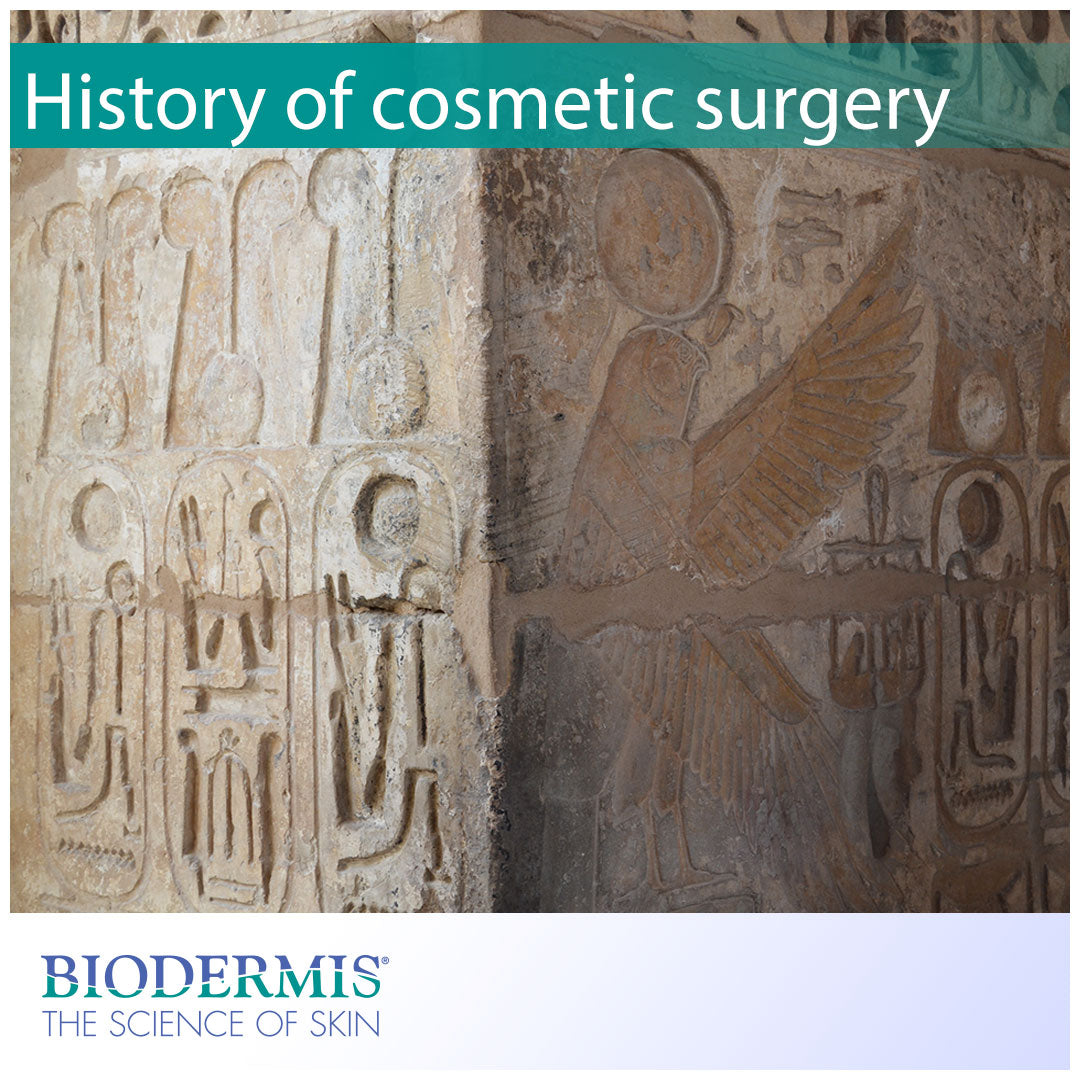Beauty standards and the pursuit of improving the physical body have been around since the beginning of recorded human history. It’s no surprise, then, that doctors and surgeons were fulfilling demands to reconstruct or change some aspect of the human body as far back as four thousand years ago. While medical interventions have changed and become more advanced over the years, we owe it to the surgical endeavors of the past to supply us with the knowledge we have today. In this article, we will briefly explore the history of plastic and reconstructive surgery to give us a better understanding of these areas of expertise in the present day.
Ancient Egyptian Surgery (1600 B.C.)
The Edwin Smith Papyrus, an ancient Egyptian document that dates approximately 3,600 years ago, documents the first surgical procedures to treat and repair broken noses, known today as a rhinoplasty. The papyrus describes 48 cases of human injuries the required treatment by a trained specialist. According to the text, the Egyptians seemed to have a relatively sophisticated understanding of human anatomy and surgical interventions.
Ancient India (800 B.C.)
Ancient Indian physicians were the first to document the use of skin grafts for reconstructive surgery. Skin grafts are skin tissue transplants, either from a human or another animal. When a skin graft is from another animal, they are called xenografts and are not meant to be permanent replacements for human skin, since the body will reject it in a few days. Skin grafts can be used to treat severe wounds, trauma, or burns. Temporary skin grafts can reduce the risk of infection at the wound site.
Middle Ages and Renaissance
Surgery continued into the Middle Ages but was largely demonized by Pope Innocent III after the fall of the Roman Empire and the spread of Christianity. During this time, scientific progress was second to religion and mysticism. Although surgery and science were stifled during this time, some innovations were made with the development of cleft-lip repair in the tenth century. Cleft lip deformities are some of the most common birth abnormalities, making this operation a popular reconstructive surgery.
By the time the Renaissance period came around, taking place from the 14th to the 17th century, surgeries were becoming more common place. New surgical techniques were being taught and practiced with safety in mind. A 15th century Islamic text known as Imperial Surgery documents 191 surgical topics, including maxillofacial and eyelid surgery. This text also illustrates medical information about gynecomastia, which is now a common procedure for men who want excess fat tissue removed around the breast area.
World War I
Innovations and progress in surgical science wasn’t on the rise again until World War I, when many men injured in war required medical assistance. Military surgeons took on the challenge of reconstructing trauma to the face and head resulting from weaponry and flying debris in the war. Some injuries were so extensive that it caused physicians to become innovative with their surgical techniques, giving rise to new methods of operating on patients. It was understood that WWI veterans would have a difficult time adjusting to civilian life and getting jobs if their physical appearance was affected by the scars of battle. It was at this time that cosmetic surgery became a more respected aspect of plastic surgery. A greater understanding of anesthesia, infection prevention, and breast augmentation and rhinoplasty procedures was achieved during this time.
Plastic Surgery in the United States
In many ways, Europe was ahead of the plastic surgery game during the 19th and 20th centuries. Nonetheless, the U.S. made some advancements, such as the first documented cleft palate operation performed by an American surgeon in 1827. While general surgeons still decried cosmetic surgery during this period, the early 1900s saw this medical specialty as a field in its own right. The following years saw cosmetic innovations made in jaw, ear, and mouth procedures.
Biodermis is an innovative market leader with 30 years of expertise in the medical silicone industry. Visit Biodermis.com today to explore a complete range of scar management and post-operative care solutions.
Biodermis offers custom tailored referral programs designed to simplify and reduce the cost of your patients' post-op care. Additionally, we offer professional pricing if you opt to retail our products. Give us a call at 800.322.3729, and we will be happy to provide additional details on these programs.





